I lived in Boston for 25 years, and during that time I developed a peculiar love/hate relationship with the Boston Red Sox. For 86 years, despite teams composed of world-class talent, they failed to win a single World Series. Nevertheless, every spring, the hope would return. I attended numerous games at Fenway Park, but always sat in the cheap right-field bleacher seats.
While in Boston recently, we took a tour of Fenway Park, which is equal parts sports venue and museum. Celebrating its 100th anniversary, Fenway Park is the oldest surviving Major League ball park in the US. Built in 1912, it is two years older than Wrigley Field in Chicago. The third oldest ball park in the US is Dodger Stadium in Los Angeles, constructed over half a century later in 1967.
That great age comes with a price. For example, we got to see the view from the expensive seats behind home plate, 20 rows back:
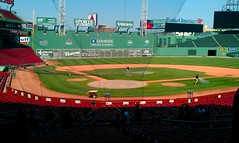
But this seat in row 20 behind home plate is the worst seat in the house (by the way, note that the seats are original wood seats dating from the 1930s):

And here’s why that seat sucks – this is the view from that seat:
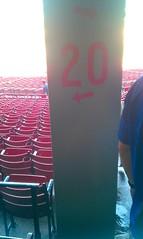
Fenway Park has lots of obscured view seats. Every year they make improvements to the ball park to keep up with the times, but they can’t seem to get rid of these:

One of the recent improvements was adding several rows of seats on top of the left-field wall, known as the Green Monster:
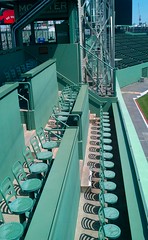
Here’s the view from the Green Monster. Fenway Park is surprisingly intimate no matter where you sit:
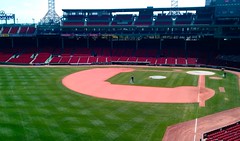
Also on top of the Green Monster is the left-field foul pole.
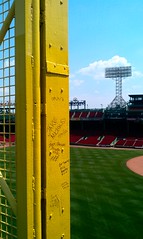
Yes, THAT pole. The one that Pudge Fisk hit with a towering home run to win the most thrilling game in Red Sox history – the sixth game of the ’75 World Series. Note the signatures on the pole, added by fans in clear defiance of this sign:
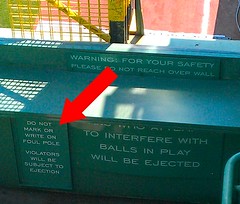
There are two other very interesting features of the Green Monster. The first is a ladder (top arrow) which was once used by the ground crew to retrieve baseballs out of a net on top of the wall. For decades, balls hitting that ladder would careen away in unpredictable directions. When the seats were added on top of the wall, the ladder no longer served any purpose. The Boston Red Sox petitioned the league to keep it as a unique feature of the park, and the league agreed. The second feature is a door (bottom arrow) which admits an attendant to a narrow passage behind the scoreboard. The attendant is necessary because the scoreboard is manually operated. Several times during his stint with the Red Sox, Manny Ramirez would disappear into the door during pitching changes to take a pee.
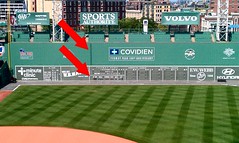
From the top of the Green Monster, you can also see the Red Seat in the right-field bleachers:
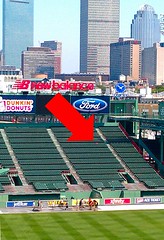
This seat represents the landing point of the longest home run ever hit in Fenway Park on June 9, 1946 by the great Ted Williams. The ball travelled 502 feet, smashing the straw hat of the man sitting in that seat. I’m sure every left-handed hitter in Fenway Park dreams of beating that famous shot.
Tucked away in a visitor’s center is the most impressive display at Fenway Park: an incredible, priceless, one-of-a-kind collection of baseballs, each signed by all of the players on the team from every year since the early part of the 20th century.
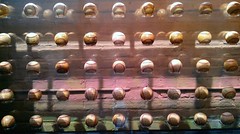
I’m not actually suggesting that they do this, but if the Red Sox were to sell that collection, I’m sure they could afford to eliminate those obstructed-view seats.












No comments:
Post a Comment